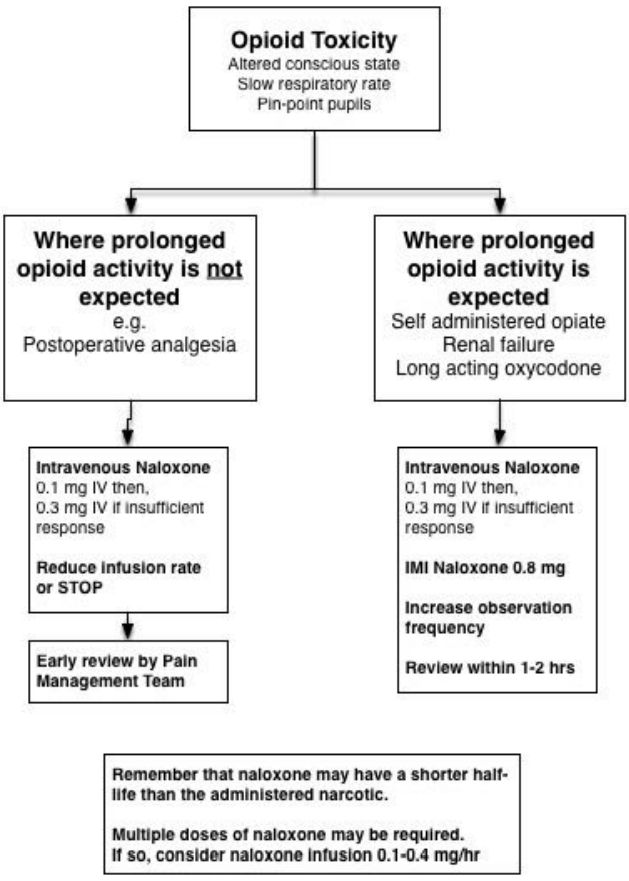Difference between revisions of "LOC-OVER SEDATION MANAGEMENT"
From NeuroRehab.wiki
(Imported from text file) |
(Imported from text file) |
||
| Line 1: | Line 1: | ||
[[Topic summary|<h5>'''TOPIC SUMMARY'''</h5>]] | |||
<br/> | |||
<div><div>1. Most common cause of LOC is over-sedation </div>2. Most commonly due to opioid toxicity, managed with Naloxone/Flumazenil<br>3. Note that IM Naloxone lasts longer (approx. 2 hrs)! Can be used if IV Naloxone infusion is not an option<br>4. Naloxone infusion: 1 mg to 100 mL, 10-40 mL/hr<br>5. Flumazenil infusion: 0.1-0.5 mg, 10-40mL/hr<br><br>[[Image:paste-96e9843f97124e0f7852f4a914795abb63f30f24.jpg]] | <div><div>1. Most common cause of LOC is over-sedation </div>2. Most commonly due to opioid toxicity, managed with Naloxone/Flumazenil<br>3. Note that IM Naloxone lasts longer (approx. 2 hrs)! Can be used if IV Naloxone infusion is not an option<br>4. Naloxone infusion: 1 mg to 100 mL, 10-40 mL/hr<br>5. Flumazenil infusion: 0.1-0.5 mg, 10-40mL/hr<br><br>[[Image:paste-96e9843f97124e0f7852f4a914795abb63f30f24.jpg]] | ||
Revision as of 11:11, 19 December 2022
TOPIC SUMMARY
1. Most common cause of LOC is over-sedation
2. Most commonly due to opioid toxicity, managed with Naloxone/Flumazenil3. Note that IM Naloxone lasts longer (approx. 2 hrs)! Can be used if IV Naloxone infusion is not an option
4. Naloxone infusion: 1 mg to 100 mL, 10-40 mL/hr
5. Flumazenil infusion: 0.1-0.5 mg, 10-40mL/hr

Reference(s)
Gale, M., Grantham, H., Morley, P. and Parr, M. (2016). Advanced Life Support Level 1: 3rd Australian Edition. Australian Resuscitation Council.
American College Of Surgeons. Committee On Trauma (2012). ATLS : student course manual. Chicago, Ill.: American College Of Surgeons.